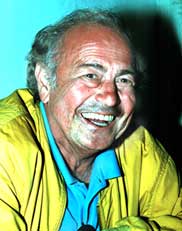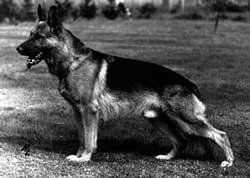The history of the kennel
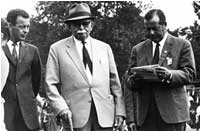 Walter with Dr. Funk | First of all hello, my name is Michael Rosén (better known as Micke) and the man Well, the story is long, more than 48 years breeding is a long time and there But I´ll try to keep the the story short and more focused on Walter, personally. |
It started in the late 40`s. But it should nearly last a decade until it became serious. At the beginning his priorities were
Walter himself was a very charismatic man, who always went his own way - especially with the breeding of German |
In the first time his ideas of the German Shepherd were controversial. It was backthen time he became convinced. "Jeder macht seins" (Everyone makes their own) He´d say, everbody has to make their own decissions and has to go their own way. His vision of breeding dogs was, to come as close to the standard as possible and combine that with a deep red-brown coloring (wich wasn´t established back then). Critics may say, that he created a new standard. This should be quite right if you think about that Wienerau dogs are decisively involved in the "black-brown" colour standard of today. |
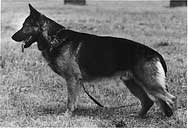 Asso von der Wienerau | To his opion his first two litters had been less spectacular. So he followed the advice As a result of this he bought the female "Berta vom Lorscher Sand", which, as he |
And this was accompanied by success. Out of Dixie came the L-litter, Luno | 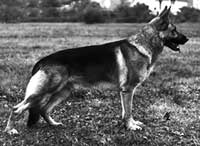 Lido von der Wienerau |
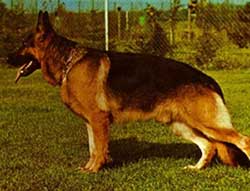 Quanto von der Wienerau | Walter himself saw this period as the most influential of his breed with the victories of his kennel group in 1965, 1966, 1967, Siegerin 1965 and VA 2 in both male and female 1971. Nevertheless his longing desire and dream of making a Sieger first became reality 21 years later. Looking at the the BSZS-show results back in 1971, Walter had reached the peak. Nobody had achieved these results earlier and a repetition seemed unimaginable. But his vision of the perfect German Shepherd still pushed him. |
The following years until 1988 he still had quite a lot of "Auslese"-dogs
but He traveled around the world and found new friends everywhere. |
Canto von der Wienerau |
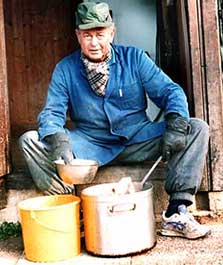 Walter while bustling | "I can only breed with the dogs I have at my disposal - that means only with In the following years he found like-minded enthusiasts for dogs and tried to reach his vision. Looking back, I guess, that in the beginning and middle of the 80´s |
Particularly he felt unhappy and kiind of ignored with Quanto. Remember as far as I know in 1972 and 1973 the positions |
The period 1988-1995 was again very succesful for the kennel Wienerau and was crowned with the success in 1992 BSZS. Walter finally reached his dream, with Even if the next years were still filled with elite dogs, 2 times VA1 (Vanta 1994 and But Walter hadn´t been Walter without a new goal. Now he
wanted to breed a | 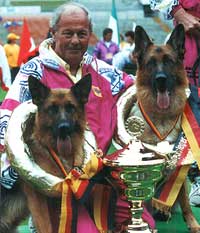 Walter with Vanta and Zamb 1992 |
Unfortunately he had not time left to fullfill he new dream. In August 1996 he died unexpectedly. This was a severe loss I guess this is the right point to end this story. There would be so much more to write about the man and breeder Walter Martin. But I hope all of you who never met Walter personally got to know a bit more about him and I succeeded in making him more real to you. At the same time I hope that all friends who knew him, agree with this portrait. |
